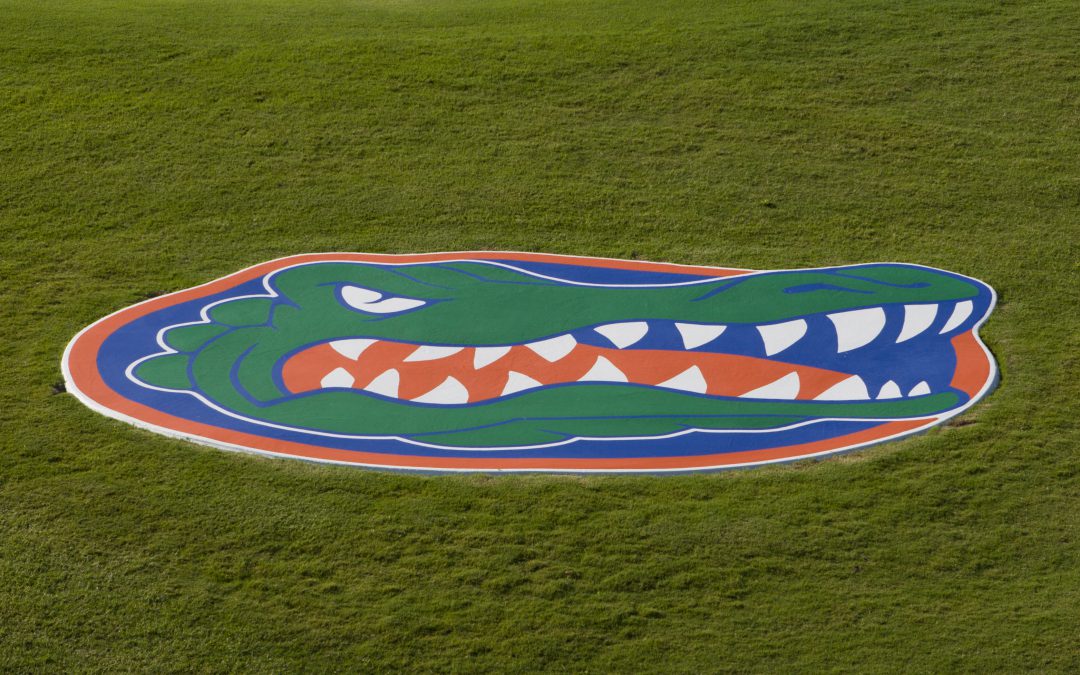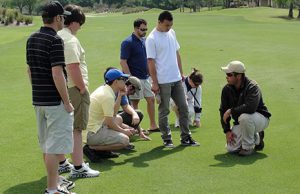
UF/IFAS Gulf Coast Turfgrass Expo & Field Day Set for June 16, 2021
We’re back! After the COVID-19 hiatus, the Gulf Coast Turfgrass Field Day & Expo returns to the normal third Wednesday in June time slot.
Join us June 16, 2021 for a COVID-19 friendly, in-person field day. Due to COVID-19 protocols, ALL ATTENDEES MUST PREREGISTER before June 15th. There will be NO on-site registration, so get your ticket now!
ATTENDEE REGISTRATION: Choose ONLY one of the four ticket options:
- Field Tour, Scouting Insects, Spill Drills
- Field Tour, Scouting Insects, Natural Pesticides
- Field Tour, Spill Drills, Natural Pesticides
- Field Tour ONLY
MORNING RESEARCH FORUM – Everybody is ready to get back to “normal” and so are the University of Florida scientists who are coming to the Turfgrass Field Day in full force – even a few you’ve likely never met in person! Change abounds and this year’s field day is no different. The line-up this year will have four focus areas and will allow greater time for interaction with the researchers.
Future Urban Landscapes – water quality and quantity concerns are major drivers leading to changes in what future landscapes will look like.
- Agustin Boeri, Graduate Research Assistant
- A.J. Reisinger, UF Soil and Water Scientist
- Mark Lusk, UF Soil and Water Scientist
- Michael Dukes, UF Irrigation Specialist
- Adam Dale, UF Turf Entomologist
- J. Bryan Unruh, UF Turf Specialist
Pest Management – pests continue to create challenges when managing turf.
- Billy Crow, UF Turf Nematologist
- Adam Dale, UF Turf Entomologist
- Phil Harmon, UF Turf Pathologist
- Pawel Petelwicz, UF Turf Weed Scientist
Turfgrass Breeding & Cultivar Development – tremendous effort is underway to bring improved turfgrasses (color, quality, reduced water and nutrition) to the market.
- Kevin Kenworthy, UF Turf Breeder
- J. Bryan Unruh, UF Turf Specialist
- Chase McKeithen, UF Turf Biological Scientist
Cultural Management – research on how to better manage turf.
- Jason Kruse, UF Athletic Turf Specialist
- Marco Schiavon, UF Turf Specialist
- J. Bryan Unruh, UF Turf Specialist
VENDOR EXPO – This year’s vendor expo will be an open air “tail-gate” style event to allow for social distancing and COVID-19 safety protocols. Vendors will be stationed in the grassy areas around the perimeter of the turfgrass research plots. Attendees will have opportunity to visit before, during, and after the research tours.
A limited number of tables and chairs will be available for the vendors. Vendors should plan to bring a pop-up tent if you have one!
Please note: To see all ticketing options please do the following: Upon entering Eventbrite site using link below, click “Tickets” link and then “I want to get tickets” “As an individual” to see all ticketing options.
LUNCH – BBQ Buffet lunches aren’t the most COVID friendly so we are changing up the menu and the venue a bit. Box lunches will be provided out on the research plots. Grab your lunch and find a shade tree, huddle under a vendor tent, or head back to your vehicle for a bit (you may want to turn your A/C on to cool off!).
AFTERNOON PESTICIDE LICENSE CONTINUING EDUCATION – Three sessions will be offered this year. All three classes will be available from ~ 12-1 and 1-2; each class will repeat with different audience so attendees can choose to get 2 different core or 1 category and 1 core CEU.
Scouting for Insects in the Landscape. This session will focus on identification of signs and symptoms of common insect pests in landscape plants. 1 Category CEU O&T, LCLM, LLO, Comm L&O will be requested for this session.
Spill Drills. Do you know what to do in an emergency? This session will cover multiple spill scenarios and what action needs to be taken to prevent injury and environmental harm. 1 Core CEU will be requested for this session.
Natural Pesticides for the Landscape. Many property owners are interested in using “natural” or low-risk pesticides but are they really effective? This session will discuss pesticide products that are labeled as natural and/or organic. 1 Core CEU will be requested for this session.
REGISTER NOW: https://2021gcturfgrassexpo.eventbrite.com
